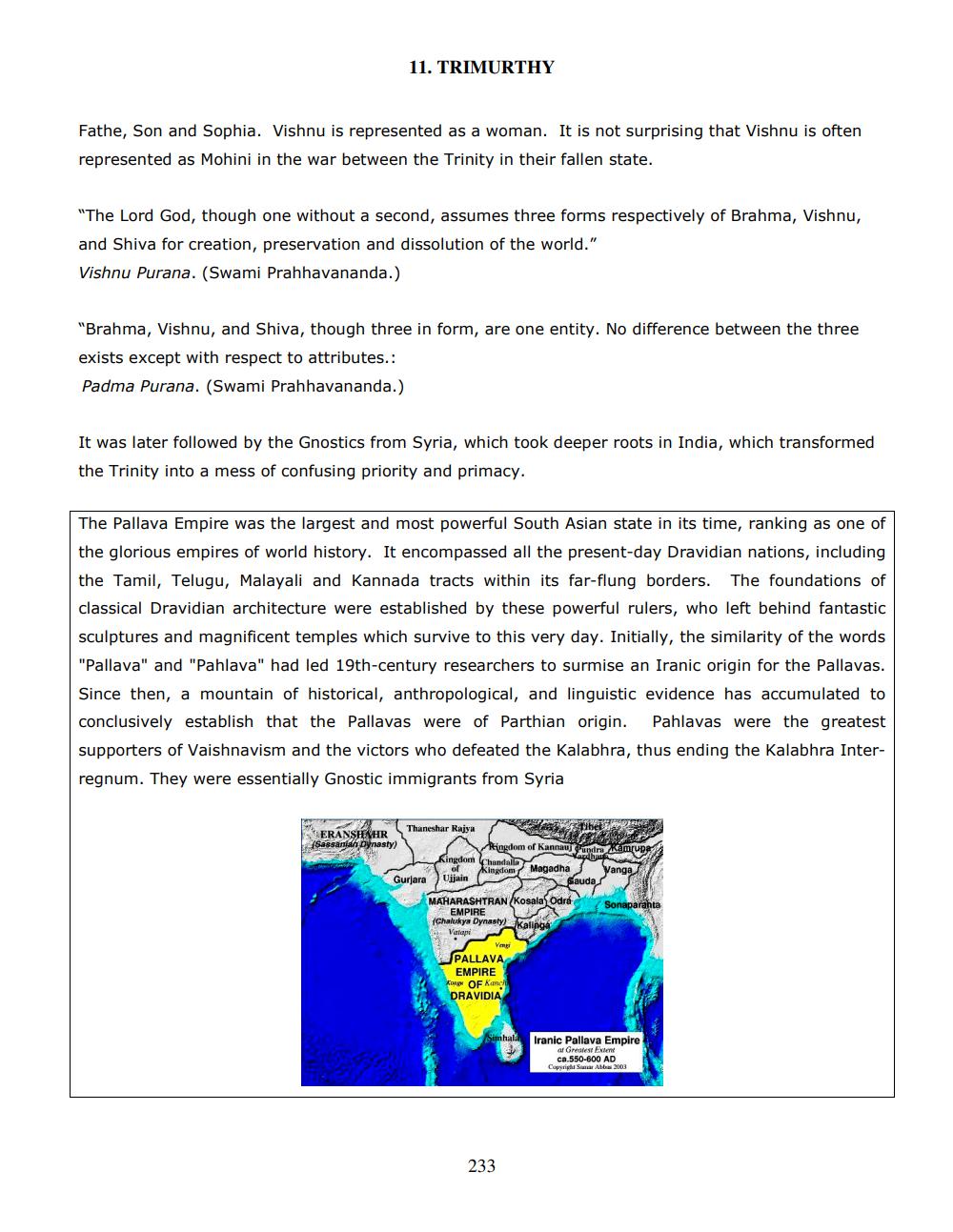________________
11. TRIMURTHY
Fathe, Son and Sophia. Vishnu is represented as a woman. It is not surprising that Vishnu is often represented as Mohini in the war between the Trinity in their fallen state.
"The Lord God, though one without a second, assumes three forms respectively of Brahma, Vishnu, and Shiva for creation, preservation and dissolution of the world." Vishnu Purana. (Swami Prahhavananda.)
"Brahma, Vishnu, and Shiva, though three in form, are one entity. No difference between the three exists except with respect to attributes.: Padma Purana. (Swami Prahhavananda.)
It was later followed by the Gnostics from Syria, which took deeper roots in India, which transformed the Trinity into a mess of confusing priority and primacy.
The Pallava Empire was the largest and most powerful South Asian state in its time, ranking as one of the glorious empires of world history. It encompassed all the present-day Dravidian nations, including the Tamil, Telugu, Malayali and Kannada tracts within its far-flung borders. The foundations of classical Dravidian architecture were established by these powerful rulers, who left behind fantastic sculptures and magnificent temples which survive to this very day. Initially, the similarity of the words "Pallava" and "Pahlava" had led 19th-century researchers to surmise an Iranic origin for the Pallavas. Since then, a mountain of historical, anthropological, and linguistic evidence has accumulated to conclusively establish that the Pallavas were of Parthian origin. Pahlavas were the greatest supporters of Vaishnavism and the victors who defeated the Kalabhra, thus ending the Kalabhra Interregnum. They were essentially Gnostic immigrants from Syria
Thaneshar Rajya
be ERANSHXHR ania Dynasty)
tingdom of Kannau und Kamrupat Kingdom Chandaila
ardhan of Kingdom
do Magadha Yanga Gurjara ) Ujjain
Sauda MAHARASHTRAN Kosala Odra Sonaparanta Chalukya Dynasty)_Kalinga Vatani
Vmg PALLAVA
EMPIRE Kow OF Kancho DRAVIDIA
Kosala Odrs
EMPIRE
Simhald
Iranic Pallava Empire
ar Green ca.550-600 AD Copyright Albs 2003
233




